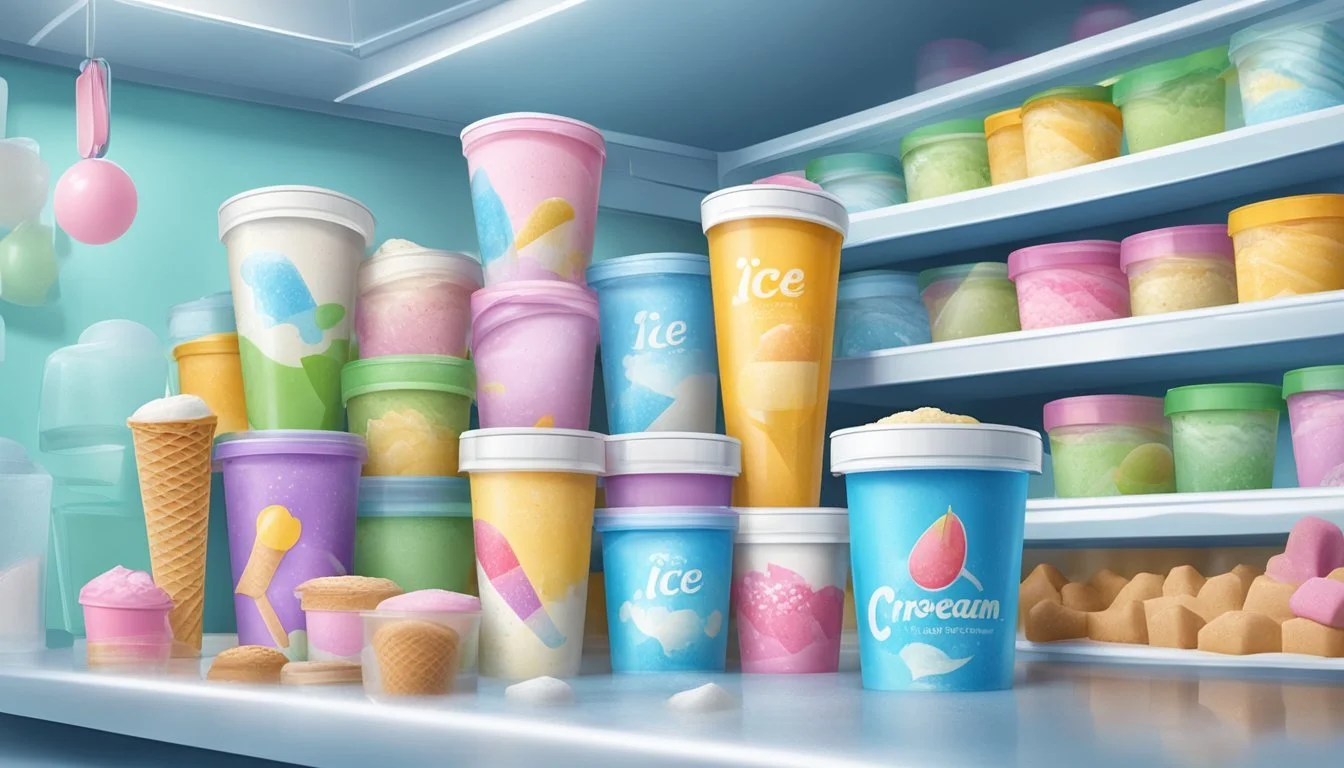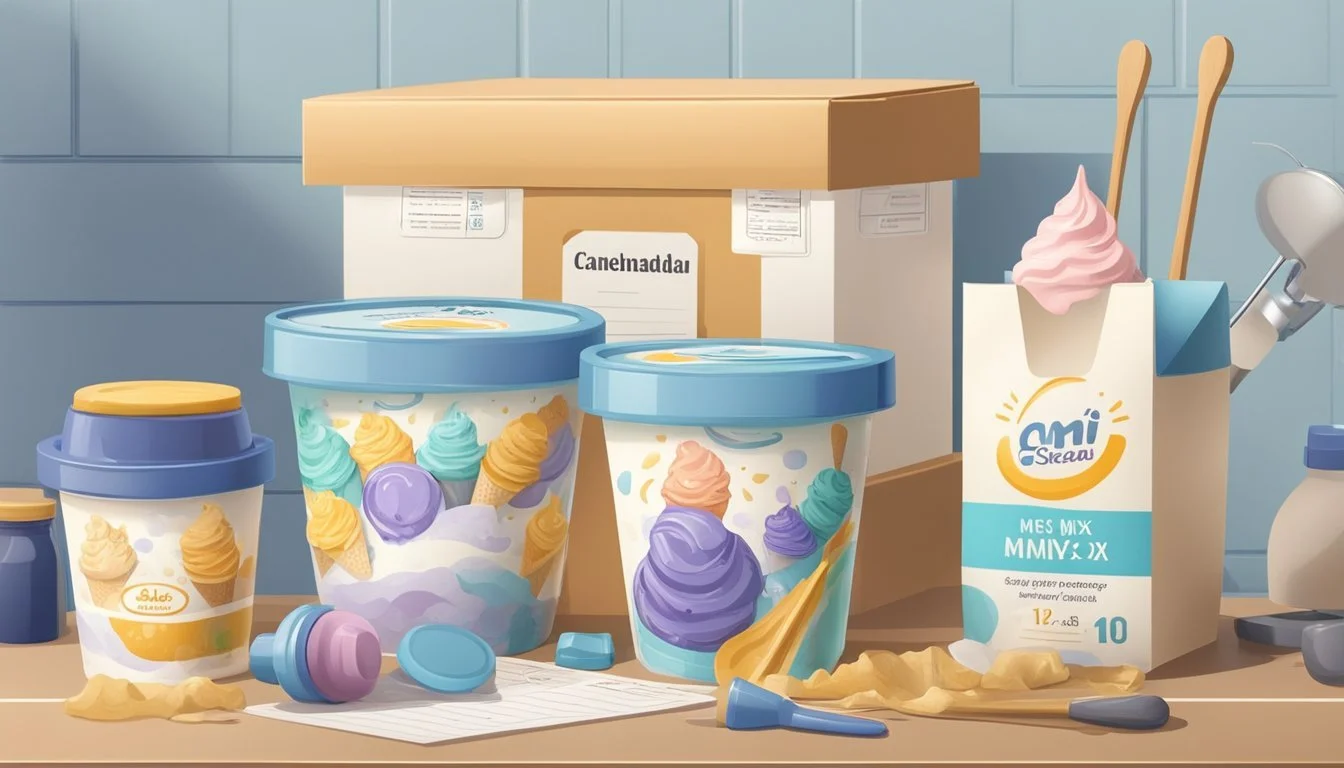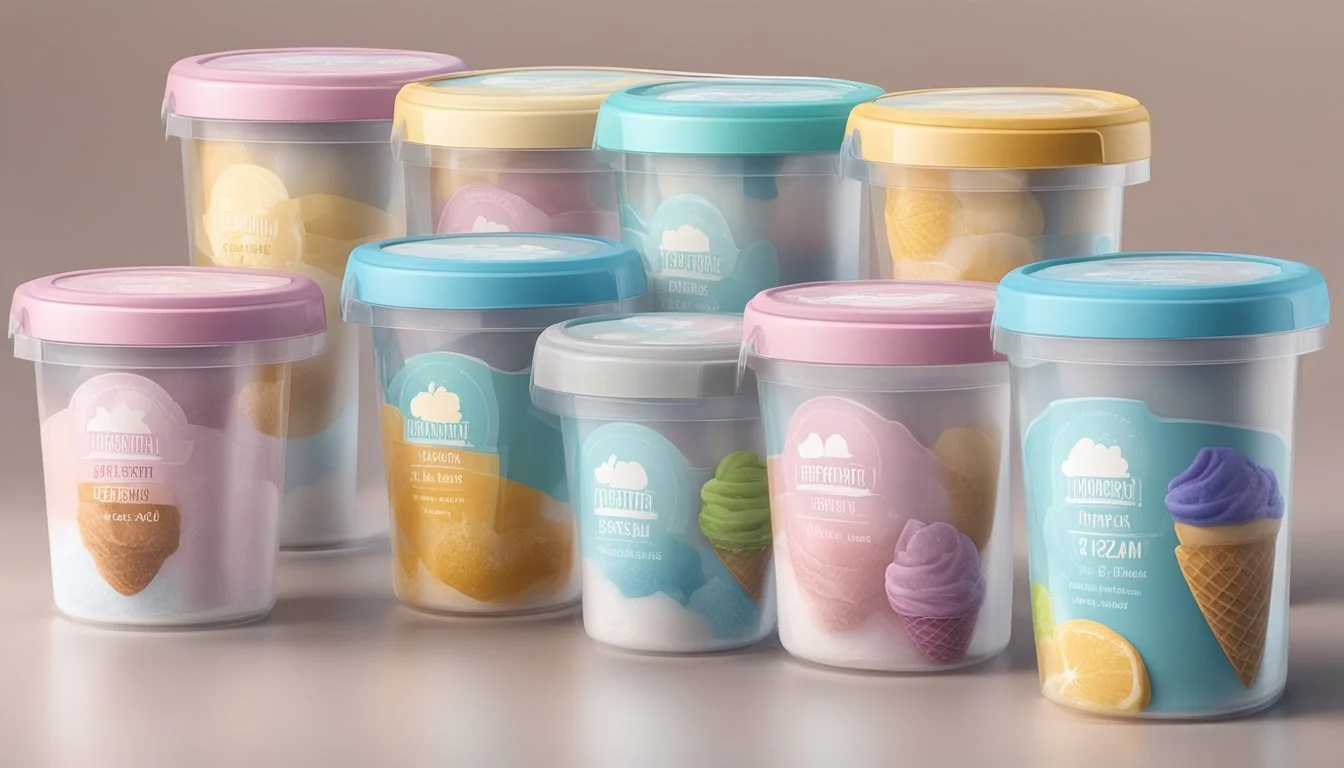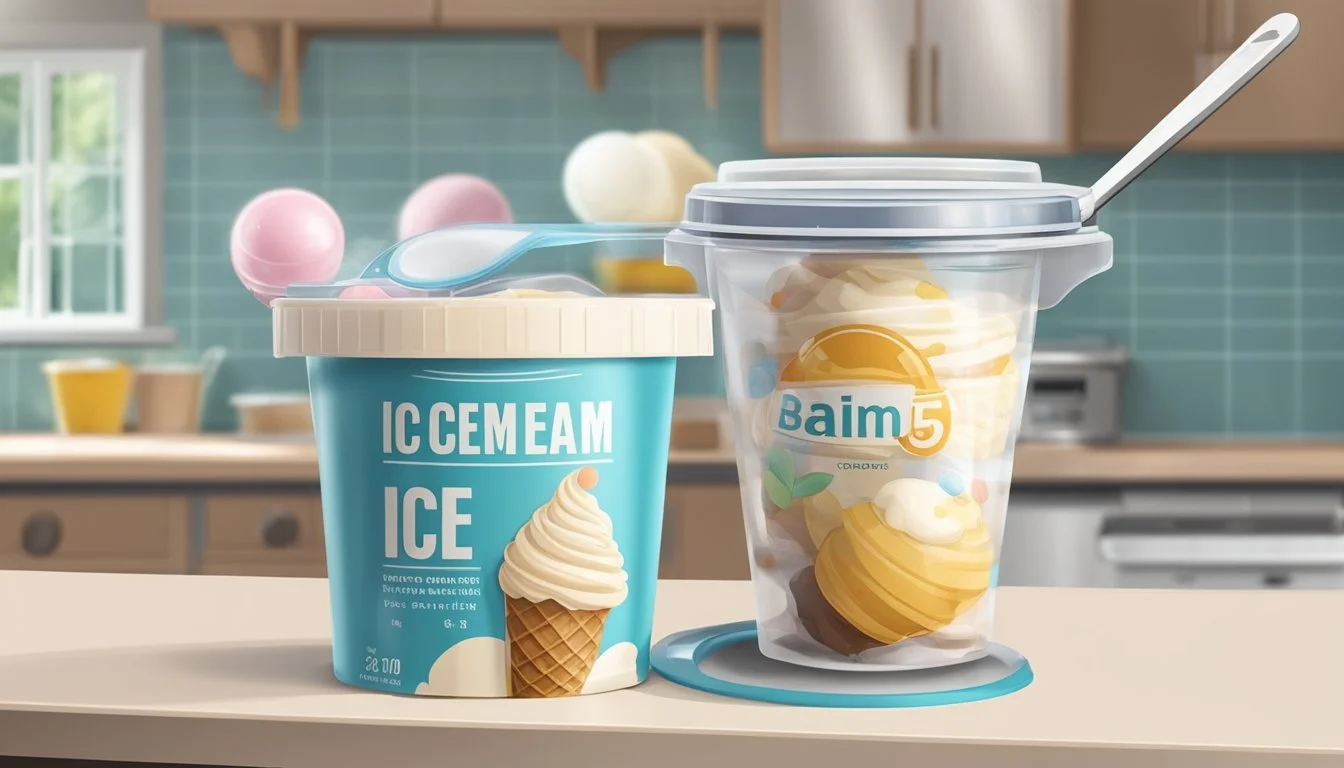How Long Does Ice Cream Mix Last?
Shelf Life and Storage Tips
Ice cream (how long does cream last?) mix, the foundational ingredient for one of the most beloved desserts, has a specific shelf life that is essential for both food safety and quality. A liquid soft serve mix, for instance, can maintain its quality for at least five weeks if it remains frozen. When ready for use, it requires a thawing period of 24-48 hours, and post-thawing, it is generally good for up to 14 days in refrigeration before it should be used or discarded.
Shelf life can vary greatly depending on whether the ice cream mix is homemade or commercially produced. Store-bought ice cream often contains preservatives that extend its shelf life, allowing it to last up to a year in the freezer if unopened. Once opened, however, it is recommended that the ice cream be consumed within one to two months to ensure the best quality and flavor. Homemade ice cream mix, lacking these preservatives, generally has a shorter shelf life and the quality of ingredients plays a crucial role in both taste and storage longevity.
Understanding the shelf life of ice cream mix is crucial for anyone in the business of serving this frozen treat or simply for those making it at home. Proper storage methods and attention to time frames ensure that every scoop of ice cream maintains the creamy texture and rich flavors that make it so enjoyable.
Fundamentals of Ice Cream Preservation
The efficacy of ice cream preservation largely hinges on understanding the nuances of shelf life and the role of temperature in maintaining product integrity.
Essentials of Ice Shelf Life
They must consider the shelf life for both soft serve mix and regular ice cream. Soft serve mix, once prepared by adding water to the powdered mix, is generally safe for use for up to 14 days. In its liquid state, soft serve mix can have a shelf life of at least five weeks but must be stored in the freezer to maintain its quality due to its delivery in a frozen state.
Regular ice cream that is sold commercially usually comes with an expiration date stamped on the container, indicating its recommended consumption date. However, it can typically last up to six months in the freezer, with food safety experts suggesting that, under proper storage conditions, this period can be extended by a couple of months at the consumer's discretion.
Importance of Freezing Temperature
Freezing temperature is critical for extending the shelf life of ice cream. Storage conditions are recommended at temperatures ranging from -5°F to 0°F (-20°C to -18°C). This temperature range is optimal to prevent the formation of ice crystals and ensure the desired creamy texture is retained. It is also essential that the storage unit maintains a consistent temperature to avoid fluctuations that could degrade the ice cream's quality.
Determining Shelf Life
When determining the shelf life of ice cream mix, one must consider the role of expiration labeling and ingredient composition. These factors are critical in understanding how long the product remains safe and of high quality.
Interpreting Expiration Labels
The expiration date on an ice cream mix is the manufacturer's estimate of when the product will no longer be at its peak quality. For liquid soft serve mix, the standard shelf life is approximately five weeks when stored appropriately. It should remain frozen until it needs to be used and then thawed for 24-48 hours before pouring into a soft serve machine. After thawing, the liquid mix can last up to 14 days.
When considering how long ice cream lasts, remember that an unopened tub can generally maintain quality for up to two months. Once opened, the product should be used within one to two months, depending on storage conditions.
Effects of Preservatives and Stabilizers
Preservatives and stabilizers within ice cream mix influence its longevity. These additives help to maintain the quality, consistency, and safety of the product over time.
Preservatives: Extend microbial stability, allowing ice cream to last longer.
Stabilizers: Enhance texture and prevents the formation of ice crystals, which can indicate spoilage.
The presence of these ingredients typically denotes an extended shelf life, especially when ice cream is stored at temperatures below -18°C (-0.4°F). However, even with preservatives and stabilizers, the shelf life cannot be indefinite, as quality diminishes due to fluctuating temperatures or length of storage.
Types of Ice Cream and Storage Implications
When it comes to ice cream, the type and method of production—whether homemade or store-bought—can greatly influence the proper storage methods and shelf life.
Homemade Ice Cream Considerations
Homemade ice cream, crafted without the same preservatives found in commercial varieties, is typically best enjoyed soon after making it. Due to its fresh and preservative-free nature, homemade ice cream can be stored in a freezer for about one to two weeks. Flavor and texture are paramount, and they can deteriorate quickly. To maintain quality:
Store at -5°F to 0°F (approximately -20°C to -18°C).
Place in an airtight container to protect from freezer burn.
Minimize the introduction of air by filling the container to the top or pressing a piece of plastic wrap onto the surface of the ice cream.
Store-Bought Ice Cream Characteristics
On the other hand, store-bought ice cream typically includes stabilizers and emulsifiers, giving it a longer shelf life. These products often have a best-by date, but they can generally be enjoyed for up to two to three months past that date if stored correctly. Key storage tips include:
Maintain a consistent freezer temperature of -5°F to 0°F.
Keep the ice cream tightly sealed to prevent the introduction of odors.
After opening, smooth the surface to reduce exposure to air and cover with a tight-fitting lid.
For both types of ice cream, it's essential to avoid the thaw-and-refreeze cycle, which can severely affect texture and flavor. The characteristics of flavors in both homemade and store-bought ice cream are best preserved when these storage guidelines are diligently followed.
Best Practices in Ice Cream Storage
Storing ice cream properly maintains its quality and extends its shelf life. Key factors include consistent freezer temperature and the prevention of freezer burn by minimizing exposure to air.
Proper Freezer Packing
Stable Temperature: It is crucial to store ice cream at a constant -5°F to 0°F. Any fluctuations can cause ice crystals to form, altering the texture and taste.
Container Placement: Place ice cream containers in the back of the freezer where the temperature is most stable. Avoid the freezer door, as this area is prone to temperature changes.
Preventing Freezer Burn
Airtight Containers: Ice cream should be kept in airtight containers to prevent the formation of ice crystals that result from air exposure. Materials such as Tupperware or freezer bags are optimal choices.
Surface Protection: Directly press a piece of wax paper or plastic wrap onto the surface of the ice cream before sealing the container to create an additional barrier against air.
Recognizing Spoilage and Food Safety
When it comes to ice cream mix, identifying spoilage is critical for avoiding foodborne illnesses. A spoiled product may not always show obvious signs, hence understanding what to look for is key.
Indicators of Spoilage
Visual Cues: Discoloration or visible mold growth indicates spoilage.
Texture Changes: Ice crystals or a chalky texture can suggest freezer burn, which degrades quality.
Odor: An off-smelling aroma is a clear sign that the ice cream mix should not be consumed.
Taste: Any sour or unusual flavors are indicative of spoilage.
Health Risks of Contaminated Ice Cream
Bacterial Growth: Ice cream mix that has been improperly stored may harbor bacteria such as Salmonella or Listeria.
Foodborne Illness: Consumption of contaminated ice cream can lead to health risks such as stomach cramps, vomiting, or more severe outcomes in immunocompromised individuals.
Strict adherence to storage guidelines and timely consumption can mitigate these risks. If there's any doubt about the condition of the ice cream mix, it is safer to discard it.
Ice Cream Texture and Quality
The quality of ice cream is critically linked to its texture, which is largely determined by the size and distribution of ice crystals within the product. Maintaining an ideal texture requires careful control of temperature and handling.
Impact of Ice Crystals Formation
When ice cream is properly frozen, the formation of small ice crystals is a normal part of the process. Ice crystals are key to providing ice cream with its smooth and creamy texture. However, the size of these crystals is crucial; large ice crystals can make the ice cream grainy and less enjoyable. To ensure the texture remains consistent, the freezing process must be quick and the temperature must be maintained uniformly.
Thawing and Refreezing Effects
Thawing and refreezing of ice cream can severely affect its quality. When ice cream thaws, the original small ice crystals melt. If it is then refrozen, larger crystals often form, which can create a coarse texture. Consequently, it's vital to minimize temperature fluctuations to preserve the quality of the ice cream. Repeated thawing and freezing cycles should be avoided, as each cycle can degrade the product's sensory properties.
Ancillary Information
In the context of ice cream mix preservation, its lifecycle can influence its application in desserts and the consistency within recipes. Understanding the properties of ice cream mix is crucial for culinary success.
Ice Cream as Ingredient in Desserts
When ice cream mix is intended for use in desserts such as cake or layered sundaes, the shelf life directly affects the final product's quality. A mix close to or past its expiration may not provide the desired taste or texture. Chefs should ensure that the mix is within its optimal consumption window to guarantee the dessert's integrity, particularly with fine pastries where flavor subtleties are key.
Volume and Density in Recipes
The volume and density of ice cream mix are significant when calculating the proportions for recipes. The mix's expansion during freezing can alter the expected yield of a dessert. This is essential in the production of frozen cakes and similar desserts where precision is imperative:
Ideal Volume: A measured volume before freezing ensures consistency.
Density Adjustments: Changes in density, due to thawing and refreezing, can affect the mouthfeel and incorporation of the ice cream into other dessert components.
Recipes benefit from a stable ice cream mix that behaves predictably under different temperature conditions.
Understanding the Science of Ice Cream
The science of ice cream involves a complex interplay of ingredients, temperatures, and physical processes that transform dairy products and other components into the creamy dessert everyone loves.
Role of Dairy Proteins
Dairy products, particularly milk and cream, are integral to ice cream due to their protein content. These proteins, mainly casein and whey, contribute to the structure and mouthfeel of ice cream. Casein stabilizes the mixture by forming a network that traps fat and air, while whey protein helps to prevent ice crystals from growing too large, ensuring a smooth texture.
The Influence of Air on Texture
Incorporating air, known as "overrun," is crucial in determining ice cream's texture. Air is beaten into the mixture during the freezing process, with optimal air content ranging from 30% to 50% of the ice cream's volume. The air not only contributes to a lighter texture but also affects how the flavors are perceived. Without the right amount of air, ice cream would become too dense and icy.










